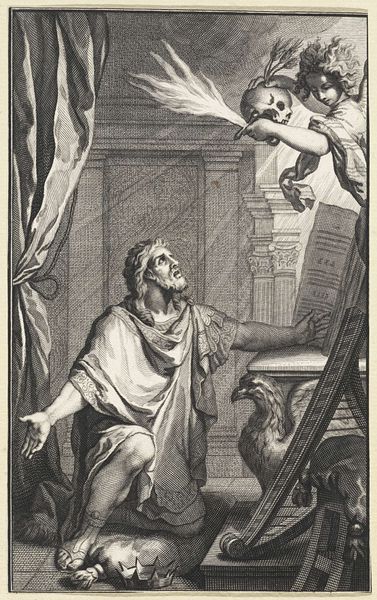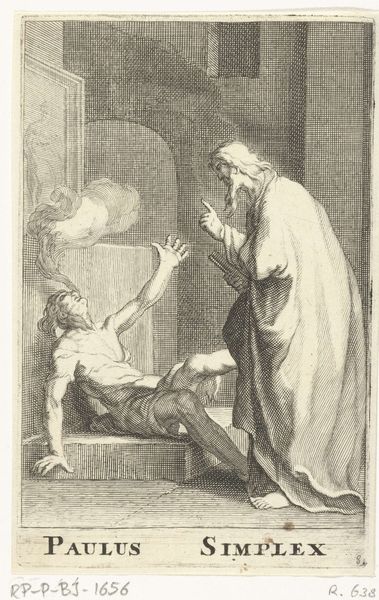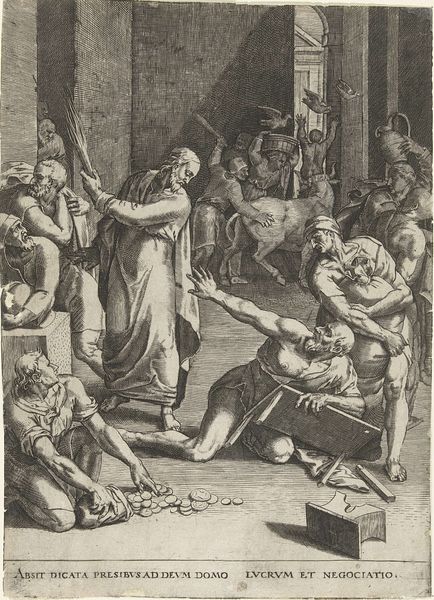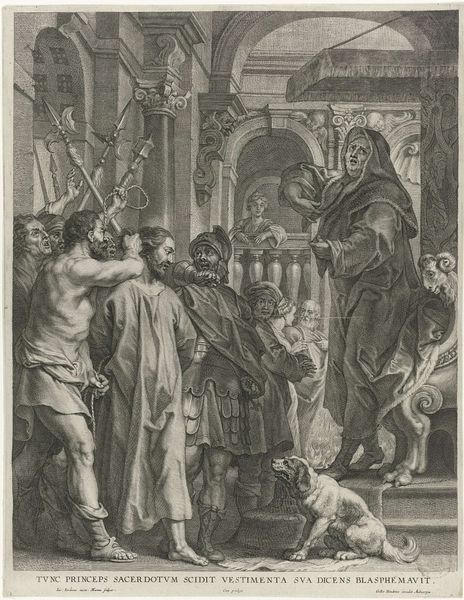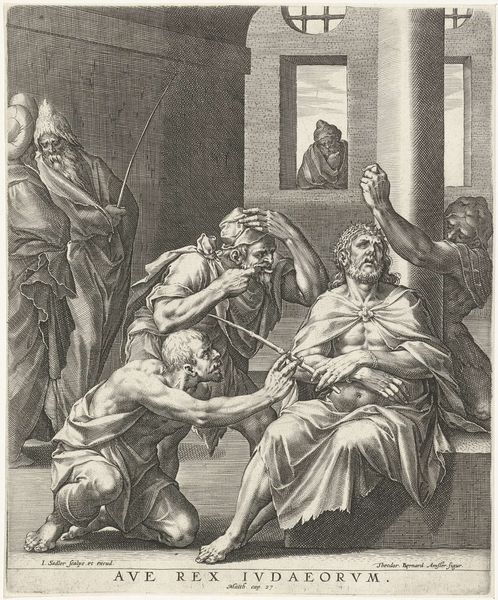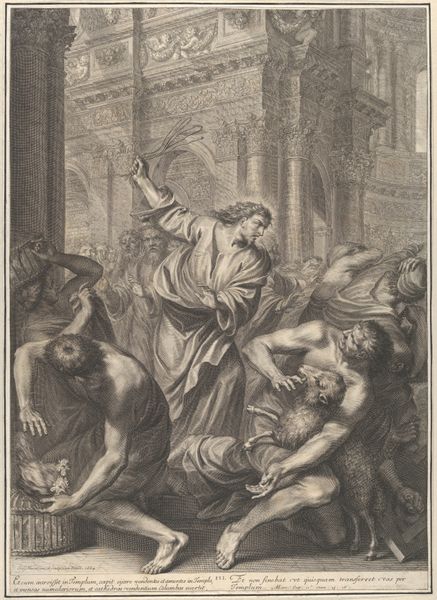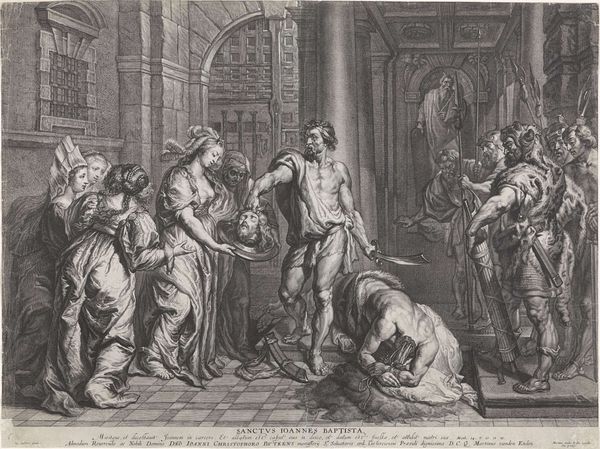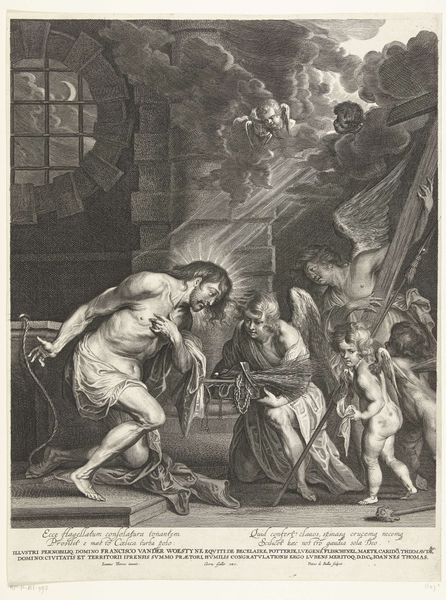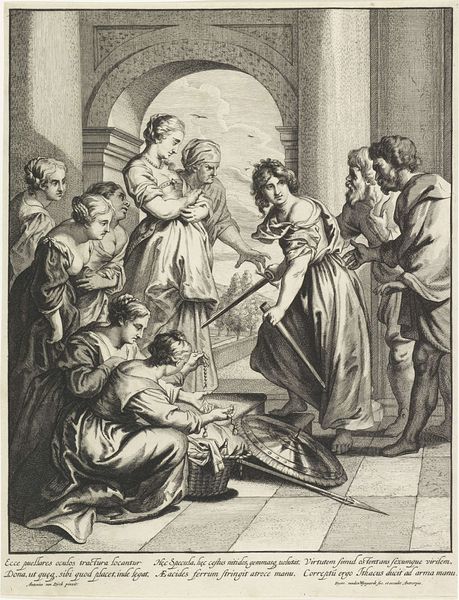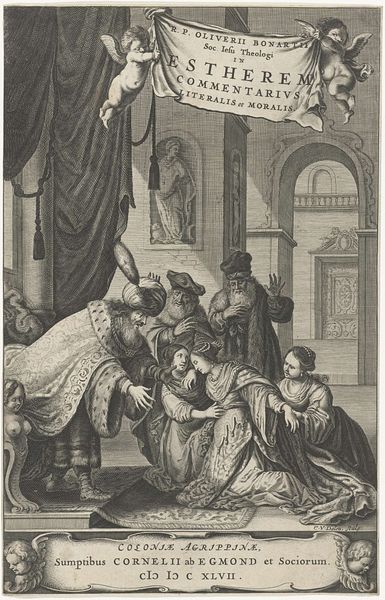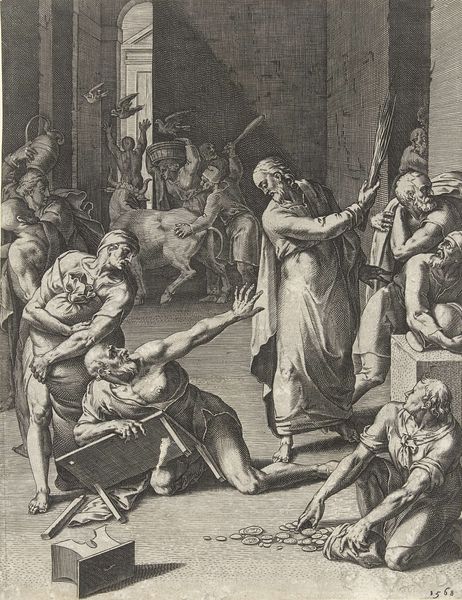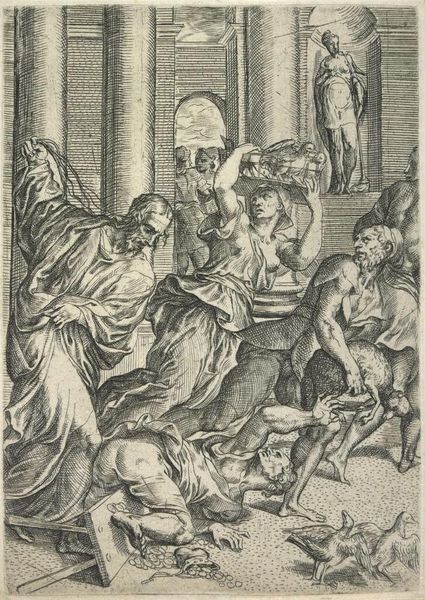
oil-paint
#
portrait
#
baroque
#
oil-paint
#
figuration
#
oil painting
#
flemish
#
genre-painting
#
history-painting
Copyright: Public Domain: Artvee
Editor: Here we have an oil painting believed to be "Saint Ivo of Brittany" by Jacob Jordaens. There’s a lot going on. It feels both dramatic and very human, but how do you even begin to interpret such a scene? What stands out to you? Curator: Observe how Jordaens masterfully orchestrates this scene, note the light and shadow, its chiaro-scuro that amplifies the dynamism inherent to Baroque painting. Consider the composition; Jordaens utilizes a complex layering of figures, creating depth and movement. Editor: I see what you mean, the light really draws the eye. So the dramatic use of light, combined with all the figures… Is that typical of Baroque? Curator: Indeed. Reflect on how the diagonal thrusts of figures and architectural elements create a sense of energy and imbalance, characteristics consistent with the Baroque aesthetic. Do you perceive a dominant color scheme, or perhaps a contrasting use of hues? Editor: Well, now that you mention it, I notice a dominant warm palette of reds and browns, particularly in the clothing, which seems to create a sense of unity despite all the different elements. It keeps it all from feeling too chaotic. Curator: Precisely. Consider too, the textural variations. Notice the contrast between the smooth rendering of skin and the rougher treatment of fabrics and architectural details. These contrasts enhance the overall visual interest. What emotions do these textural variations invoke? Editor: Hmmm, I hadn’t thought about texture, but I think it does add a sense of realism, grounding the more theatrical elements. So, by analyzing the composition, the light, and color, you can sort of "decode" the artwork in a more informed way, beyond just an initial impression. Curator: Precisely, through meticulous observation, one may appreciate the intentionality behind every compositional choice, which will give rise to the meaning inherent in it.
Comments
No comments
Be the first to comment and join the conversation on the ultimate creative platform.

